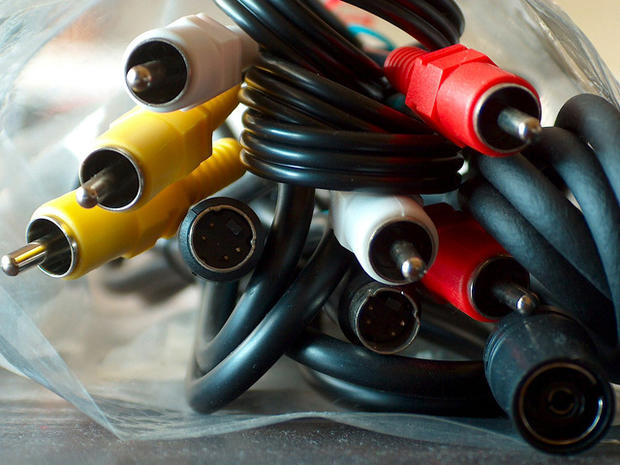Cut the Super Bowl XLVI cable cord
COMMENTARY One of the big levers that broadcast TV has had over cable and streaming has been televising major events ... like the 46th Super Bowl. The combination of scarcity (only one authorized outlet) and massive audience drives the multi-million dollar prices for ads.
But the pressure and promise of the Internet has pushed the NFL and NBC to stream the Super Bowl for the first time ever. Someone with a regular Internet connection or a Verizon Wireless smartphone can see the game on NBCSports.com or NFL.com. But what if you want to watch but don't want to squint at a tiny screen or hunker over a monitor? All you have to do is connect your computer and TV set together for an end run around the television-distribution industry. And in the process, you can see how the face of an entire industry is about to change.
Why it works
People have talked for years about the convergence of television, computers and the Internet for years. Companies may have difficulty in finding the form factors to combine all three (though smartphones and tablets are a start). But coaxing them together in your living room is a lot easier than you might think.
The computer is the lynchpin to making this work because it connects to the Internet and provides video and sound to the user: Web in one end, entertainment out the other. Whether you're dealing with a desktop or a laptop, there will be connectors to get video and audio out. Some desktops have two video connectors, in which case you will be able to connect both the monitor and the TV at the same time. If there is only one connector, you'll have to use the TV as the monitor.
Similarly, a television set is designed to take audio and video inputs and then let someone enjoy them. Your task is to set up a chain of connections that goes from the Internet, through a computer, and out to a television.
Find the connectors
Where things get a little sticky is determining exactly how to connect everything together. There are a few basic cases. If you have a television that connects to your Internet connection, whether directly or through a home network, and it will display a browser, you're home free. But there's a good chance that you don't.
So plan on connecting a computer to the TV, video and audio separately. The tricky part is finding the right cables and connectors. The video connector on the computer could by any of a number, including three popular standards: VGA, DVI, or HDMI. Audio is probably either one or two headphone jacks -- small plugs 3.5 mm in size.
The TV set could also have a number of different connectors, including HDMI, DVI, RCA or S-video. Audio might be RCA; HDMI carries both video and audio. It may be that the video connectors on both the computer and TV are the same, so you'll need only one. You may need an adapter on one end or the other, or there may be a cable that has the right type of connector on each side.
The easy way to deal with this is using a digital camera. Take a picture of the connectors on your computer and the TV set. Take it into an electronics store along with any documentation from both the devices, and show it to the people working there. Let them help you find the cables and connectors you'll need.
Once they're hooked up
Depending on the set-up of your computer and television, you may have to take some further steps. A laptop with a VGA connector might require you to press a special function button to switch from the built-in display to the television. If your desktop has two connectors for video, you might have to do something to swap which one shows the desktop. (For example, you can find instructions for Windows 7 here.)
Whatever the specifics, turn on the TV and computer, get the browser going on the TV screen, go to NBCSports.com or NFL.com, and enjoy the show.
Of course, nothing has to end there. You can use the same basic technique to watch all sorts of programs that networks don't allow on Netflix or Hulu. If it's on a website, you can see it on your TV -- and if that isn't disruptive technology, it's hard to say what could be.

